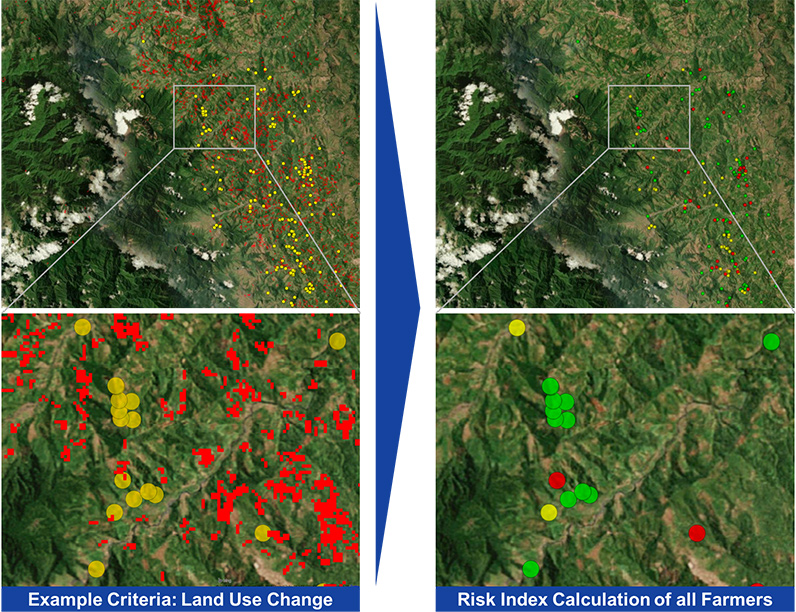GRAS Index
All relevant sustainability aspects at one glance
The GRAS Index aims to unite any sustainability indicator that is relevant for the assessment of agricultural products and their sustainable origin in order to provide the users with a better overview and understanding.
Application Examples
Access the GRAS Tool+
Explore all the features of the new GRAS Tool+, so you can better evaluate the sustainability risks for your area of interest!
A comprehensive value which provides all relevant sustainability information
The basic idea of the GRAS Index is to unite sustainability indicators into one comprehensive index, that supports the risk assessment of agricultural products and their sustainable origin. Though this idea is not generally unique, the approach to compile data and directly address agricultural and forestry applications is yet unknown nonetheless. The GRAS Index is capable to gather and merge the relevant data from the fields Biodiversity, Land Use Change, Carbon Stock and Social Indices and displaying the overall score as a simple and easy-to-use value that can be applied to a region or a whole country.
Adjust the GRAS Index according to site-specific special requirements
In our approaches, we respect regional and customer-specific requirements. Therefore, the GRAS Index weighting factors can be adjusted to the needs of your specific strategy, reporting criteria and specialties of the assessment region. At the same time, the methodology stays sound and transparent.
Don’t hesitate to contact us to discuss possible options for your specific sustainability strategy.
Find out more about the methodology of the GRAS Index here
Methodology
GRAS calculates the four main factors for Biodiversity, Land Use Change, Carbon Stock based on the share of overlapping areas of the categories and with the assessment area. Further, the Social Factor is a comprehensive value derived from a number of most relevant national indices. Then, all four factors are translated into one comprehensive value using predefined weighting factors.
In addition to that, the WFSocial is set to 0 for countries that rank 0.9 or higher in the United Nation’s Human Development Index (HDI) or are EU-15 member states. For all other countries, the weighting factors are set as following:
| Sustainability Risk Factors | Weighting Factors |
|---|---|
| Biodiversity | 35% |
| Carbon Stock | 15% |
| Land Use Change | 35% |
| Social | 15% |
The weighting factors are set based on:
- Relative importance given to biodiversity, carbon stock, land use change and social factors inside the EU RED for the production of biomass
- Availability of comprehensive and reliable data
Find out more about the GRAS methodology per category here.
